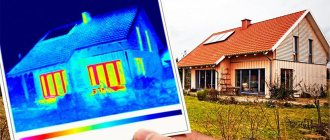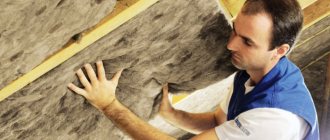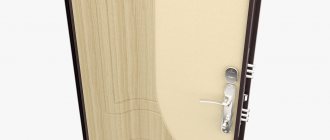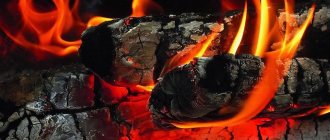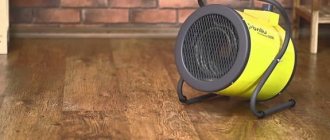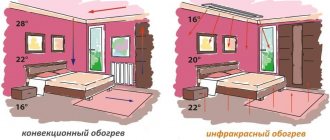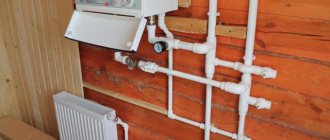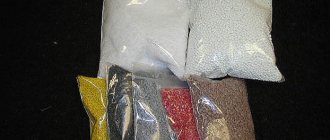If you are starting the stage of insulating a room and are at a loss with the choice of material, then basalt-based stone wool would be an excellent solution. Such fibrous insulation belongs to the mineral category, and is produced on the basis of rock waste, including basalt. Hence the name - stone (basalt) wool. Therefore, the question “which is better – stone wool or basalt wool” is at least formed incorrectly. Let us emphasize once again that stone wool is insulation based on basalt (stone) rocks.
Types of insulation material
If you are starting the stage of insulating a room and are at a loss with the choice of material, then basalt-based stone wool would be an excellent solution.
The category of mineral insulation in the form of cotton slabs includes:
- Glass wool is a material made from glass production waste and some sand.
- Stone wool is insulation made from basalt rocks.
- Slag wool is a material produced from waste from the metallurgical industry.
In the material below we will look at basalt insulation, formulate its description and study the technical characteristics in detail in order to understand that it is better and more convenient to use this type of material for insulating premises and industrial equipment.
Stone insulation production technology
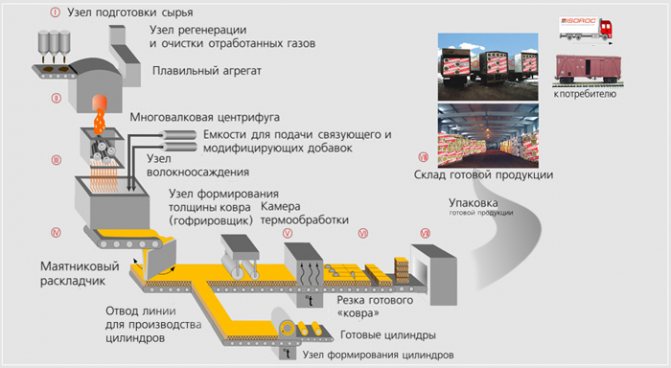
Basalt insulation is made from waste from the mining industry
Basalt insulation is made from waste from the mining industry, but most of the constituent substance is given to basalt. The stone wool production process looks like this:
Stone wool: characteristics and advantages
- First, all rock waste, crushed almost to a powdery state, is heated at a temperature of 1300-1500 degrees Celsius. At this moment, the main substance melts to the state of thin fibers. In this case, the process of fiber formation is stopped depending on the required rigidity of the basalt insulation boards. That is, if you need soft stone wool, then the fibers will be slightly longer and thicker. If the purpose of production is semi-rigid or rigid slabs, then the fiber is made thicker and shorter.
- Then, in special tanks, the fibrous base is mixed with air masses, which allows the fibers to be cooled and fixed in a chaotic manner relative to each other.
- Next, phenolic resins are added to the resulting mass as a binder. They do not allow the fibers to move from their occupied position, which means that the structure of the stone heat insulator will remain unchanged subject to operating conditions.
- The final stage of production of basalt insulation is the pressing of slabs while simultaneously being exposed to a temperature of 300 degrees Celsius.
Important: as a layer of insulation that reduces the hydrophobicity, metallized sheets are used, which are either glued or sewn with metallized thread. This type of stone slabs behaves especially well when insulating facades under wet finishing or when insulating saunas and baths.
Characteristics of mineral wool
Mineral wool is a fibrous material with excellent thermal insulation properties. It is obtained by melting rocks (slag, dolomite, sand, basalt rocks), characteristics:
- Thermal conductivity - 0.03-0.07 W/(m*K). The coefficient depends on the density of the material. In this indicator, mineral wool is second only to expanded polystyrene. Due to the accumulation of moisture between the fibers, thermal conductivity can increase by an average of 50%.
- Density - 35-125 kg/cubic. m (depending on brand and type).
- Humidity - 1%.
- Water absorption - 6-30%.
- Vapor permeability - 1 (if you do not use a vapor barrier).
- Fire resistance. Mineral wool does not burn. Melting begins when the fibers are kept for more than 2 hours at a temperature of 1000°C.
- Sound absorption coefficient - 0.7-0.9.
- Toxicity - 3rd group of carcinogenic substances according to the IARC classification (not hazardous to health).
- Service life - 50 years.
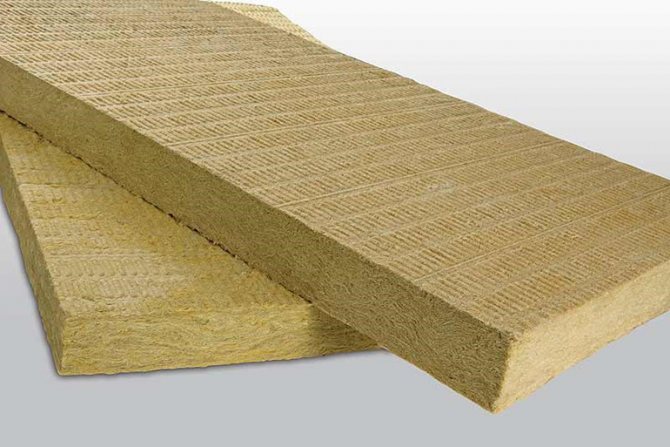
Mineral wool is the most popular insulation.
Indicators of strength and frost resistance vary among different types and brands of mineral wool.
Benefits of use
The use of wool for insulation is justified by its following advantages:
- high thermal insulation properties;
- resistance to temperatures (does not deform, does not lose its qualities under the influence of heat, frost);
- immunity to bacteria, fungi, chemicals;
- fire safety;
- high vapor permeability, which is why the material does not create a “thermos” effect, allowing the wood to “breathe”;
- light weight, easy to transport and store;
- ease of installation.
Insulation format and structure
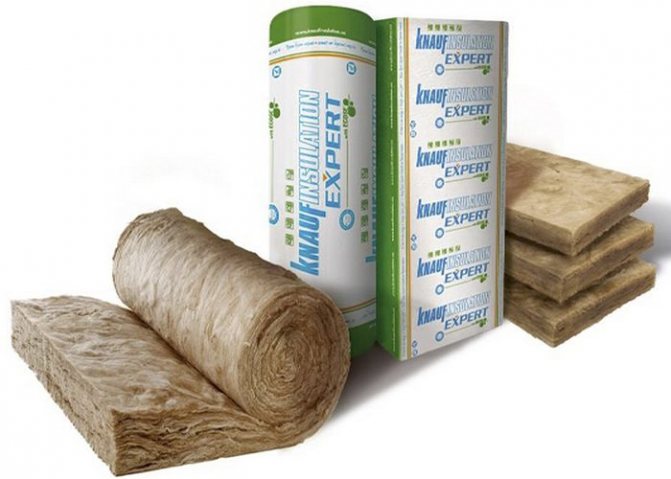
By type of purpose, all basalt-based insulation materials can be divided according to shape and structure
By type of purpose, all basalt-based insulation materials can be divided according to shape and structure. So, there are the following types of insulating material:
- Plates. The most popular thermal insulator. Used for insulation of flat horizontal/vertical and inclined surfaces. Easy to install, lightweight and easy to cut.
- Mats (rolls). They have a softer structure and are used if the object does not experience an increased load-bearing load. They can also be used for insulation of ventilation and industrial equipment with increased fire hazard.
- Cylinders. A special subtype of basalt wool used for insulating highways for various purposes, including gas pipelines.
According to its structure, basalt rock can be:
- Soft. More elastic insulation. Unlike slabs, it has a lower density and is most often sold in mats and rolls.
- Semi-rigid. This type of mineral material is most often sold in two types - cylinders or slabs. This structure has proven itself in the best possible way in construction work for private and industrial purposes.
- Rigid slabs. This material has the highest density and is used where there are high load-bearing loads on the facility, as well as an increased fire hazard of the equipment. High-rigidity boards are especially often used in industry.
Application of basalt wool
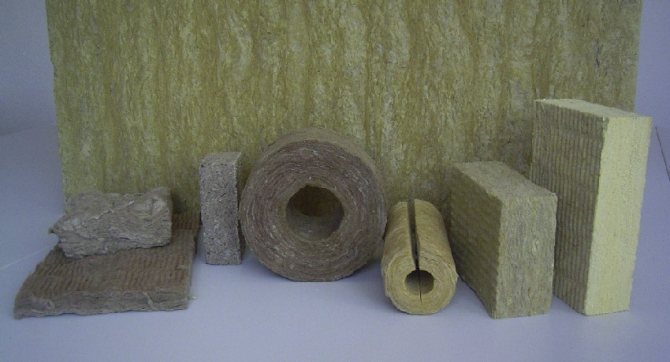
Basalt wool is used for sound and heat insulation of horizontal, vertical and inclined building envelopes, for insulation of facades, frame walls, roofs, floors, foundations, pipelines, industrial equipment, etc. The use of basalt wool is very wide, that is, the material is suitable for any thermal insulation work.
Characteristics of basalt-based insulation
To understand the difference between basalt (stone) wool and glass wool (or polystyrene foam), let’s study in detail the technical characteristics of basalt insulation
To understand the difference between basalt (stone) wool and glass wool (or polystyrene foam), let’s study in detail the technical characteristics of basalt insulation. So, they look like this:
- Thermal conductivity. For stone wool, the level of thermal conductivity ranges from 0.032 to 0.048 WT/(m*K), while foam plastic and foam rubber have the same values. Glass wool is slightly larger and transmits heat faster, but not significantly.
- Fire resistance. This criterion is important when choosing insulation. So, it is worth knowing that stone wool begins to melt only at a temperature of 1114 degrees Celsius, but does not ignite. At the same time, foam plastic is capable of burning at a temperature of 400-500 degrees. In addition, basalt wool can have the advantage of being prone to self-extinguishing when melted, while polystyrene foam will also release harmful styrene and phenol vapors into the atmosphere.
- Hydrophobicity. Here the insulation is slightly inferior to expanded polystyrene. But not critical. The percentage of water absorption by stone wool is only 2%. At the same time, foam plastic does not absorb water at all. However, if stone wool gets wet for a long time, the structure of the slabs and mats will still lose its original state.
- Vapor permeability. Here the indicator is 0. .3 mg/(m*h*Pa). This suggests that breathable walls made of wood or brick can easily let their vapors out without fear of being subject to the negative and destructive effects of condensation. It will successfully pass through the basalt wool structure and come out. That is, moisture is not harmful to either the walls or the insulation.
- Soundproofing. Basalt wool perfectly dampens noise both from outside and inside apartment partitions. Therefore, this type of insulation is especially in demand by developers whose properties are located in noisy areas.
- Density Here the density level of slabs and mats can vary from 30 to 159 kg/m3. Accordingly, with an increase in the density of fibers in the structure of basalt wool, its rigidity also increases.
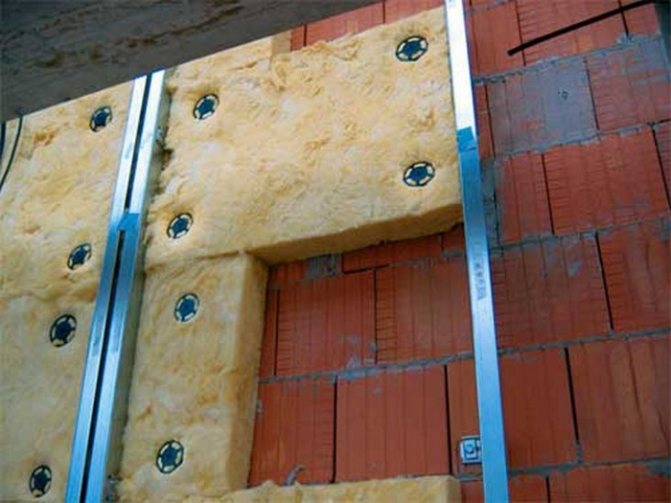
Stone insulation is not prone to deformation over a long period of time
- Durability. Stone insulation is not prone to deformation over a long period of time. The exception is a large amount of water that gets on the insulation. Thus, stone wool can withstand compression from 5 to 80 kilopascals.
- Environmental friendliness. Plates and mats of basalt insulation, although they contain phenolic resins, are still considered an environmentally friendly material, since a large number of phenols have already been neutralized at the stage of insulation production. Therefore, slabs and mats can be used both outside and inside objects.
- Chemical and biological inertness. Basalt insulation does not rot, does not rust, and does not react with metal and other aggressive environments. At the same time, no microorganisms or living creatures are able to live in the material.
Important: when working with stone wool, despite the ease and simplicity of its operation, it is necessary to use protective clothing. Because the slabs may crumble slightly when cutting, which produces allergenic pollen. And when installing sections of insulation, all joints should be covered with scraps of basalt fiber material.
Which is better: mineral or basalt wool?
LEED experts confirmed the environmental friendliness of TECHNONICOL stone wool
30.10.2019 TECHNONICOL received an expert opinion confirming the compliance of the mineral insulation produced by the company’s factories with the criteria of the international environmental certificate LEED.
LEED experts tested TECHNONICOL stone wool for compliance with the key requirements of the environmental certification system. “Our product received the maximum rating: experts confirmed that the use of TECHNONICOL mineral insulation can significantly reduce the thermal conductivity of the structure and reduce overall heat loss, thus contributing to increasing the energy efficiency of the entire building. Separately, the possibility of recycling waste generated after installation was noted. Our factories are capable of accepting and processing 100% of mineral wool not used in construction,” comments Elena Kuznetsova, Marketing Director for the Mineral Insulation direction of TECHNONICOL. In addition, TECHNONICOL basalt insulation ensures comfortable temperature and humidity in interior spaces, which is an important criterion for assessing the LEED certification system. LEED requires building materials to reduce energy consumption by 10% for new buildings and 5% for renovations. A significant parameter is the possibility of reusing waste generated during installation. The distance from the place of extraction of raw materials to the place of production (ideally no more than 800 km) and methods of its transportation are also taken into account.
LEED (The Leadership in Energy & Environmental Design) is a building certification rating system that allows assessing their impact on ecology and the environment. Buildings applying for LEED certification are subject to a number of requirements, including environmental friendliness of the development site, energy efficiency and reduction of atmospheric impact, indoor environmental quality, environmental safety of building materials, etc. By using materials that have a LEED expert opinion, the developer can receive additional points for building certification according to the LEED system.
The LEED certification system is becoming increasingly popular every year in Europe, as well as in Asian countries such as Singapore and Korea. The presence of this certificate is often a formal condition for the participation of materials in a tender for the design and construction of facilities in these regions.
“An expert opinion on the compliance of our materials with LEED criteria will allow us to strengthen our position in the European market, where increased attention is paid to the environmental friendliness and safety of materials throughout their entire life cycle. This will become one of the tools for development and increasing the number of consumers among developers in this region,” noted Vasily Tkachev, head of the Mineral Insulation department at TECHNONICOL.
Recommendations for choosing basalt insulation
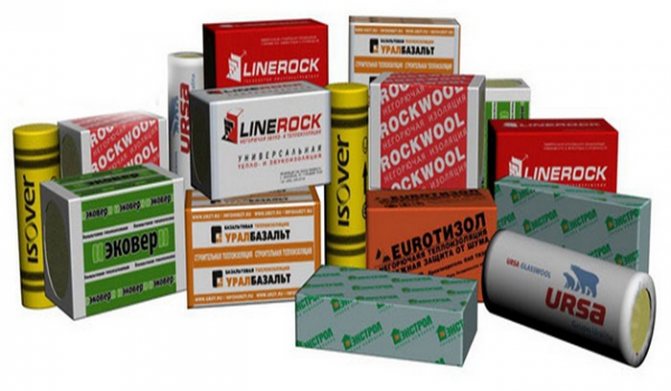
Since basalt-based mineral insulation has different densities and shapes, you need to be guided by some principles when choosing a material
Since basalt-based mineral insulation has different densities and shapes, you need to be guided by the following principles when choosing a material:
- To insulate a sloping roof, it is better to use a material whose thickness is at least 15 cm and whose density is from 40 kg/m3.
- To achieve high-quality sound insulation in interior partitions, you can use insulation with a density of 40-60 kg/m3. This will be enough, but there is no point in overpaying.
- To insulate the external walls of a house, it is recommended to use basalt insulation slabs with a thickness of 10 cm and a density of at least 80 kg/m3.
- If a ventilated façade is to be installed in two layers, then it is advisable to use two types of material – soft wool and then a harder one. In this case, softer material should be installed closer to the walls, and hard slabs should be installed closer to the façade finishing.
Important: when buying basalt-based insulation, pay attention to the packaging. As a rule, the manufacturer packages the material in shrink film, which prevents moisture from getting inside. And if the packaging is torn or damaged in places, it is better to refuse such a purchase. It is quite possible that during the process of storing or transporting the insulation, moisture has already entered it, which reduces the thermal insulation properties of basalt wool.
Manufacturers and cost of basalt insulation
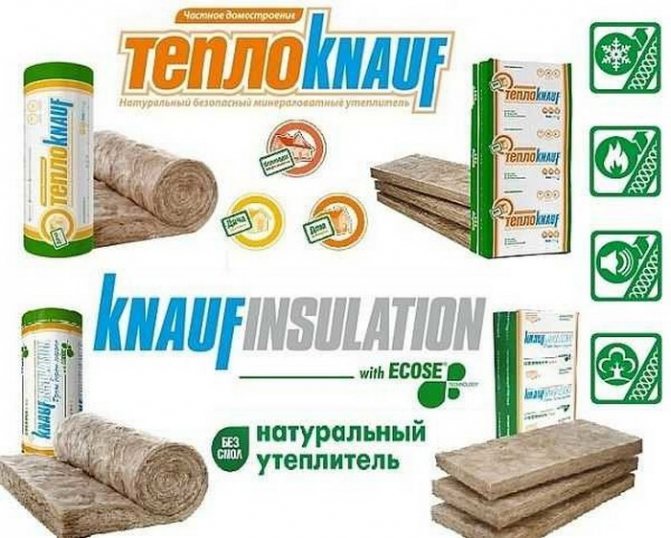
The most popular on the Russian market are basalt insulation from Knauf
The most popular on the Russian market are basalt insulation from the following manufacturers:
- This manufacturer has insulation of any density and shape. Most often, the slabs are packaged in 12-24 pieces. into the package. The cost of basalt wool from Knauf starts from 16 USD. per package.
- Here the insulation also has two types - rolls and slabs. The cost of slab insulation starts from 14 USD. per package.
- The cost of insulation from this manufacturer also starts from 14-24 USD. per package.
- A new manufacturer of basalt-based insulation, but already proven. The cost of the material starts from 24 USD. for packaging in slabs or rolls.
We hope that the characteristics and cost of basalt fiber material given in the material will help you make the right choice and provide high-quality insulation for your facility.

